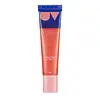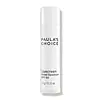Ultra Violette Sheen Screen Hydrating Lip Balm SPF 50 Versus Paula's Choice Lipscreen Broad Spectrum SPF 50
What's inside
What's inside
 Key Ingredients
Key Ingredients

 Benefits
Benefits

 Concerns
Concerns

 Ingredients Side-by-side
Ingredients Side-by-side

Lanolin
EmollientTheobroma Cacao Seed Butter
EmollientEthylhexyl Methoxycinnamate
UV AbsorberOctocrylene
UV AbsorberCera Alba
EmollientButyl Methoxydibenzoylmethane
UV AbsorberButyrospermum Parkii Butter
Skin ConditioningRicinus Communis Seed Oil
MaskingErigeron Annuus Flower Oil
Skin ConditioningOlea Europaea Fruit Oil
MaskingAroma
Tocopherol
AntioxidantCalcium Aluminum Borosilicate
Silica
AbrasiveAluminum Hydroxide
EmollientTin Oxide
AbrasiveBenzyl Alcohol
PerfumingCI 77891
Cosmetic ColorantCI 15850
Cosmetic ColorantCI 45410
Cosmetic ColorantCI 77491
Cosmetic ColorantLanolin, Theobroma Cacao Seed Butter, Ethylhexyl Methoxycinnamate, Octocrylene, Cera Alba, Butyl Methoxydibenzoylmethane, Butyrospermum Parkii Butter, Ricinus Communis Seed Oil, Erigeron Annuus Flower Oil, Olea Europaea Fruit Oil, Aroma, Tocopherol, Calcium Aluminum Borosilicate, Silica, Aluminum Hydroxide, Tin Oxide, Benzyl Alcohol, CI 77891, CI 15850, CI 45410, CI 77491
Hydrogenated Olive Oil
Skin ConditioningPolyglyceryl-3 Diisostearate
EmulsifyingBeeswax
Emulsion StabilisingOzokerite
Emulsion StabilisingHomosalate
Skin ConditioningEthylhexyl Salicylate
UV AbsorberPolyethylene
AbrasiveButyl Methoxydibenzoylmethane
UV AbsorberMicrocrystalline Wax
Emulsion StabilisingOctocrylene
UV AbsorberTheobroma Cacao Seed Butter
EmollientSilica
AbrasiveTocopheryl Acetate
AntioxidantButyrospermum Parkii Butter Unsaponifiables
Skin ConditioningOlea Europaea Fruit Oil
MaskingTocopherol
AntioxidantHydrogenated Vegetable Glycerides Citrate
EmollientCopernicia Cerifera Wax
Water
Skin ConditioningPhenoxyethanol
PreservativeHydrogenated Olive Oil, Polyglyceryl-3 Diisostearate, Beeswax, Ozokerite, Homosalate, Ethylhexyl Salicylate, Polyethylene, Butyl Methoxydibenzoylmethane, Microcrystalline Wax, Octocrylene, Theobroma Cacao Seed Butter, Silica, Tocopheryl Acetate, Butyrospermum Parkii Butter Unsaponifiables, Olea Europaea Fruit Oil, Tocopherol, Hydrogenated Vegetable Glycerides Citrate, Copernicia Cerifera Wax, Water, Phenoxyethanol
 Reviews
Reviews

Ingredients Explained
These ingredients are found in both products.
Ingredients higher up in an ingredient list are typically present in a larger amount.
Also known as Avobenzone, this ingredient is a chemical sunscreen filter that provides protection in the UV-A range.
Avobenzone is globally approved and is the most commonly used UV-A filter in the world.
Studies have found that avobenzone becomes ineffective when exposed to UV light (it is not photostable; meaning that it breaks down in sunlight). Because of this, formulations that include avobenzone will usually contain stabilizers such as octocrylene.
However, some modern formulations (looking at you, EU!) are able to stabilize avobenzone by coating the molecules.
Avobenzone does not protect against the UV-B range, so it's important to check that the sunscreen you're using contains other UV filters that do!
The highest concentration of avobenzone permitted is 3% in the US, and 5% in the EU.
Learn more about Butyl MethoxydibenzoylmethaneOctocrylene protects skin from sun damage. It absorbs UV-B with peak absorption of 304 nm. It is a common sunscreen ingredient and often paired with avobenzone, a UVA filter. This is because octocrylene stabilizes other sunscreen ingredients by protecting them from degradation when exposed to sunlight. Octocrylene is a photostable ingredient and loses about 10% of SPF in 95 minutes.
Octocrylene also acts as an emollient, meaning it helps skin retain moisture and softens skin. It is oil-soluble and hydrophobic, enhancing water-resistant properties in a product.
Those who are using ketoprofen, a topical anti-inflammatory drug, may experience an allergic reaction when using octocrylene. It is best to speak with a healthcare professional about using sunscreens with octocrylene.
The EU allows a maximum of these concentrations:
Learn more about OctocryleneOlea Europaea Fruit Oil is the fixed oil obtained from the ripe fruit of the Olive. In other words - olive oil.
The primary contents of olive oil are glycerides of the fatty acids linoleic, oleic and palmitic.
Olive oil also contains antioxidants such as Vitamin E. Antioxidants may help reduce signs of aging by fighting unstable free-radical molecules. It also contains Vitamins A (retinol), D, and K.
The squalene in olive oil makes it a great emollient. Emollients help soothe and soften your skin by trapping moisture in. This makes olive oil a great skin moisturizer.
Studies show olive oil to have antibacterial and antifungal properties in low concentrations. Another study found olive oil irritated sensitive oily skin. We always recommend speaking with a professional about using this ingredient in your routine.
Due to the fatty acid content, this ingredient may not be fungal-acne safe.
Learn more about Olea Europaea Fruit OilSilica, also known as silicon dioxide, is a naturally occurring mineral. It is used as a fine, spherical, and porous powder in cosmetics.
Though it has exfoliant properties, the function of silica varies depending on the product.
The unique structure of silica enhances the spreadability and adds smoothness, making it a great texture enhancer.
It is also used as an active carrier, emulsifier, and mattifier due to its ability to absorb excess oil.
In some products, tiny microneedles called spicules are made from silica or hydrolyzed sponge. When you rub them in, they lightly polish away dead skin layers and enhance the penetration of active ingredients.
Learn more about SilicaTheobroma Cacao Seed Butter comes from the Theobroma cacoa, or Cacao tree. Cacao trees are native to tropical landscapes.
Like other plant butters, Cacao seed butter is an emollient. Emollients help soothe and soften your skin. By creating a barrier to trap moisture in, emollients help keep your skin hydrated.
Cacao seed butter contains antioxidants known as polyphenols. Antioxidants help fight free-radical molecules by stabilizing them. Unstable free-radicals may cause damage to your skin cells. Antioxidants may help with anti-aging.
Theobroma Cacao Seed Butter can be bad for acne prone skin.
Learn more about Theobroma Cacao Seed ButterTocopherol (also known as Vitamin E) is a common antioxidant used to help protect the skin from free-radicals and strengthen the skin barrier. It's also fat soluble - this means our skin is great at absorbing it.
Vitamin E also helps keep your natural skin lipids healthy. Your lipid skin barrier naturally consists of lipids, ceramides, and fatty acids. Vitamin E offers extra protection for your skin’s lipid barrier, keeping your skin healthy and nourished.
Another benefit is a bit of UV protection. Vitamin E helps reduce the damage caused by UVB rays. (It should not replace your sunscreen). Combining it with Vitamin C can decrease sunburned cells and hyperpigmentation after UV exposure.
You might have noticed Vitamin E + C often paired together. This is because it is great at stabilizing Vitamin C. Using the two together helps increase the effectiveness of both ingredients.
There are often claims that Vitamin E can reduce/prevent scarring, but these claims haven't been confirmed by scientific research.
Learn more about Tocopherol